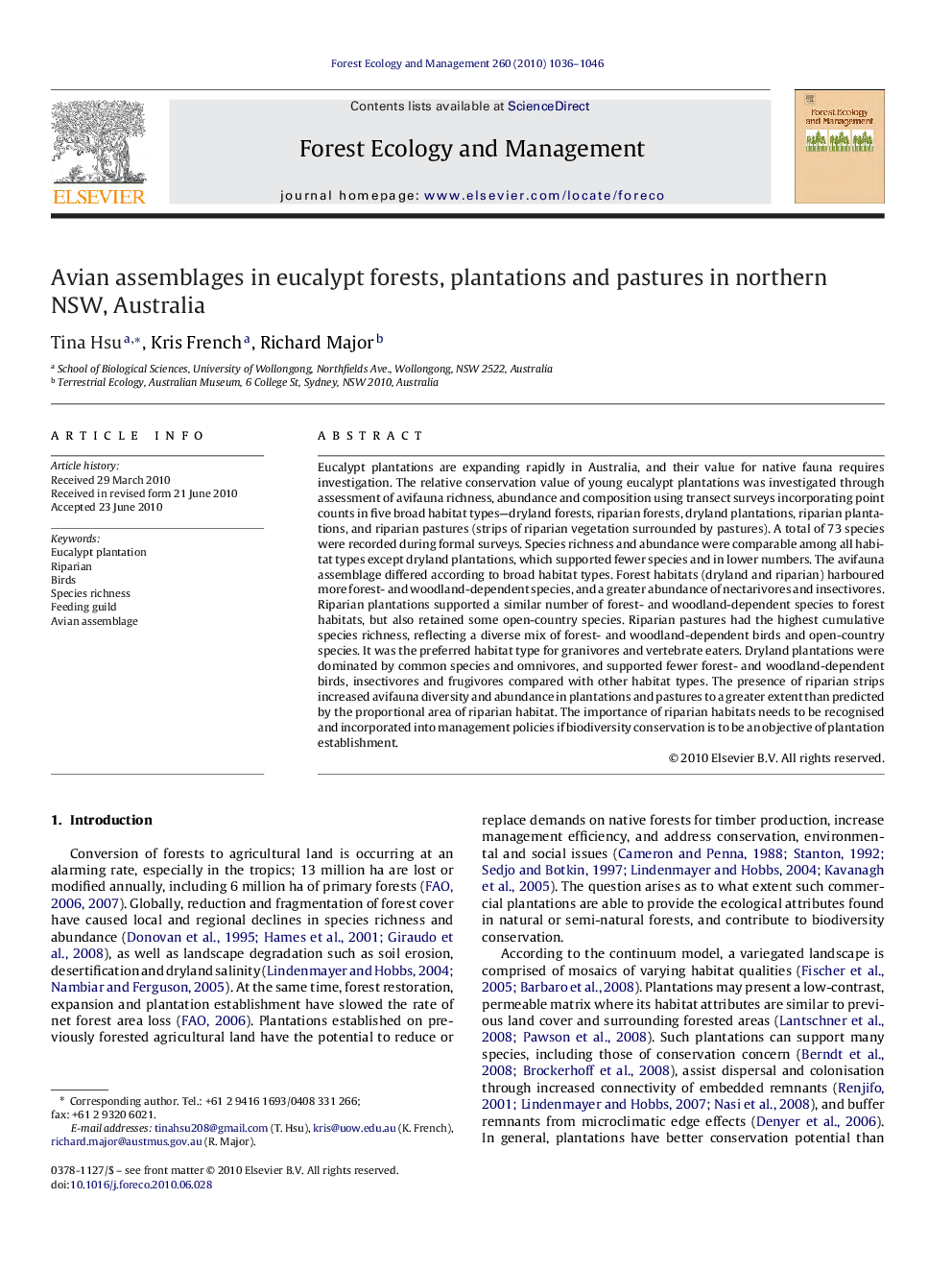| Article ID | Journal | Published Year | Pages | File Type |
|---|---|---|---|---|
| 88430 | Forest Ecology and Management | 2010 | 11 Pages |
Eucalypt plantations are expanding rapidly in Australia, and their value for native fauna requires investigation. The relative conservation value of young eucalypt plantations was investigated through assessment of avifauna richness, abundance and composition using transect surveys incorporating point counts in five broad habitat types—dryland forests, riparian forests, dryland plantations, riparian plantations, and riparian pastures (strips of riparian vegetation surrounded by pastures). A total of 73 species were recorded during formal surveys. Species richness and abundance were comparable among all habitat types except dryland plantations, which supported fewer species and in lower numbers. The avifauna assemblage differed according to broad habitat types. Forest habitats (dryland and riparian) harboured more forest- and woodland-dependent species, and a greater abundance of nectarivores and insectivores. Riparian plantations supported a similar number of forest- and woodland-dependent species to forest habitats, but also retained some open-country species. Riparian pastures had the highest cumulative species richness, reflecting a diverse mix of forest- and woodland-dependent birds and open-country species. It was the preferred habitat type for granivores and vertebrate eaters. Dryland plantations were dominated by common species and omnivores, and supported fewer forest- and woodland-dependent birds, insectivores and frugivores compared with other habitat types. The presence of riparian strips increased avifauna diversity and abundance in plantations and pastures to a greater extent than predicted by the proportional area of riparian habitat. The importance of riparian habitats needs to be recognised and incorporated into management policies if biodiversity conservation is to be an objective of plantation establishment.
Research highlights▶ Dryland plantations were dominated by common birds, habitat generalists and omnivores. ▶ Riparian remnants in plantations and pastures elevated avian richness and abundance. ▶ Riparian plantations were most similar to forests in avian assemblage. ▶ Broad habitat type was a useful determinant of avifauna community composition. ▶ Avian feeding guilds exhibited different responses to broad habitat types.
